Have you ever been shopping for a camera and been bamboozled by a barrage of acronyms that you didn’t recognize?
Sure, they all sound great, but it’s useful to understand what they mean so that you can choose the right camera. Part one of this article will clear up three of six acronyms that you’re sure to encounter.
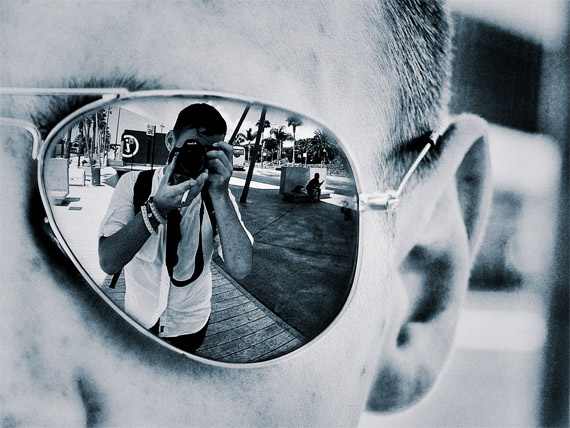
“Lifethroughlenses” captured by Gary John Lee
DSLR
A Digital Single-Lens Reflex camera combines a single-lens reflex camera (SLR) with a digital camera back. But what does this mean for you and your photography?
You’ll be able to capture shots exactly as you see them, as opposed to having colors skewed in preparation for print. And you capture them as digital photos, rather than images recorded to film. This ‘what you see is what you get’ principle is achieved through the camera’s mirror-and-prism format which works as follows: light passes through the lens and bounces upwards off a mirror into a prism, which reflects the light through the viewfinder to the human eye.
DSLR cameras boast several other benefits, including the fact that they enable users to capture images of a very high quality. This is due to the large electronic imaging sensor used by the digital camera.
And the ability to change lenses gives you great versatility because a lens can affect many aspects of a photo, including the color, contrast, clarity and saturation.
Another benefit of DSLR cameras is their near-zero lag time, which is the time between the user pressing the shutter and the camera capturing the shot. This is particularly helpful in action photography where you might only have a split second to get the perfect picture.
HDR
High Dynamic Range, an idea conceived as early as 1850, is a photographic technique that enables the user to capture a greater range of light-to-dark areas than would be possible in a standard camera shot. The outcome means improved accuracy in the photo’s intensity levels.
The technique is achieved by capturing several shots simultaneously (known as bracketing), even though the shutter has only been pressed once. These captured images are all shot at different exposure levels and, when merged, give a more accurate representation of the light-to-dark range.
HDR is measured in EV (Exposure Value) differences, which determine contrast. A DSLR camera has a contrast of 2048:1, twice that of a standard digital camera which is 1024:1.
HDR images are often known as ‘scene-referred’ because they more closely reflect what the human eye sees than standard photos.
ISO
Derived from the International Organization for Standardization, ISO originally referred to the speed of photographic negative materials. It denotes the sensitivity to the amount of light in a shot.
Simply put, the higher the ISO, the more sensitive the film is to light and the better your shots will be in a low-light scene. In daylight, a setting of no more than 100 is ideal. In low light, the camera needs a bit of help, which you can provide by increasing the ISO.
This can also be useful when you are taking action shots because it reduces the likelihood of a blurred image. However, be wary of going too high with your ISO setting; this will cause noise to appear.
Most cameras have an automatic ISO setting that adjusts according to the amount of light in a scene. If you do need to choose a high ISO value, to create artistic effects for example, you’re better doing it with a DSLR camera. They provide a larger electronic imaging sensor, which gives you a broader ISO range than a point-and-shoot digital camera.
In this second and final part, we’ll cover another three, ensuring you hit the ground running with your photography once you’ve made your choice.
RAW
RAW isn’t an acronym, but it’s important nevertheless. It’s a method of capturing ‘raw’ data, as opposed to standard JPEGs. Used by professional photographers, it can result in higher quality images. But taking the photo is only the first step.
Once you’ve pressed the shutter, your picture is captured as a RAW file and left alone. No automatic processing (saturation, brightness, white balance, etc.) or compression is applied, as it automatically would be if shooting a JPEG.
The outcome is a considerably bigger file that you can process yourself on a computer. So, what’s the point? The level of potential detail in a RAW image becomes clearer and more impressive when compared with a JPEG.
RAW files give you 16-bit images to work with, whereas JPEG images are restricted to 8-bit. That’s the difference between 65,536 levels and 256 levels of brightness, from black to white.
This is helpful, not only for producing higher quality images, but for bringing out the best in scenes where there is cloud, shade, or mixed sources of lighting, or where underexposure might occur. The captured RAW file contains all the detail and it’s just a case of revealing it when you edit the image.
Compare this to shooting JPEGs; the levels are determined by the camera as soon as the shot is captured and the JPEG is then compressed. This makes the chances of recovering or rectifying features such as white balance difficult, if not impossible.
CMOS and CCD
Complementary Metal Oxide Semi-Conductors (CMOS) and Charge Coupled Devices (CCD) are two types of image sensor that convert light into electrons; they then read the electrons’ values and turn them into a digital image. In a nutshell, they transform what you see through your lens into a JPEG or RAW file.
CCDs were widely considered superior, providing high-quality images with low noise levels. CMOS sensors, although they use considerably less power, were always susceptible to noise.
However, CMOS has recently become much more widespread because such sensors can now take care of image-processing tasks such as analog-to-digital conversion and noise reduction.
That’s not to say that CCDs don’t have any advantages, particularly when it comes to panning while shooting and capturing fast-moving objects. They use a global shutter that captures an entire frame in one go, whereas a CMOS records what it sees line by line, resulting in the possibility of distorted moving objects.
You’ll probably see a CMOS sensor in the camera you choose. Why? It’s because of improvements in performance, low power consumption and size.
EXIF
Exchangeable Image File Format contains metadata about your photo that is recorded as you shoot with a digital camera. The format is common with JPEGs and TIFFs, but not with RAW files, although there are equivalents.
The data includes the date and time your photo was taken (the time zone is not noted); camera settings such as model, aperture, shutter speed, and focal length; and descriptions and copyright information.
This information comes in handy when reviewing your photography. If you’re examining a shot and aren’t happy with something, check the EXIF data to see exactly what your camera’s settings were and tweak them for future shots.
Other settings include a thumbnail of the shot itself, plus GPS information. The former enables you to preview on the camera’s LCD screen and the latter to tag the location of your photo. It’s possible on some cameras and most smartphones.
The newest photo editing software and many image gallery programs also recognise EXIF data. In fact, even if you edit your photo and save it under a different name, the data will normally remain intact.
When it comes to buying a camera, the sheer amount of choice makes the process difficult enough. But when acronyms and terms start being thrown at you left, right and centre, finding the right camera becomes even more challenging.
Armed with an understanding of six of the most common and important acronyms you’re likely to hear about, you’ll be better prepared than most to ensure you make the right purchase.
About the Author:
Peter White works for Serif, a leading developer of software for small business and home users. Serif retails a range of software for photo editing, which includes PhotoPlus, a feature rich photo editing software package and PhotoPlus Starter Edition, a photo editing software package for less experienced users.
Like This Article?
Don't Miss The Next One!
Join over 100,000 photographers of all experience levels who receive our free photography tips and articles to stay current:

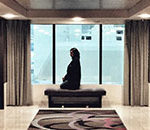

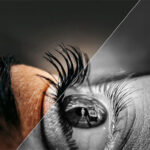
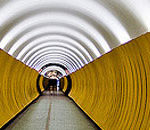
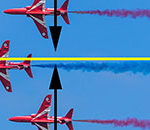
When referring to ISO, It would be more accurate to say film sensitivity. Film was available as both positive or transparency and negative (generally) for making prints.
Thanks for the article. A correction in the HDR: “… It would NOT possible…”.
Thanks.
Quality information… I found this blog interesting and educational. Thanks.
Really a Very Good Topic from Beginers to Professionals. One generally go for a brand or recommendations from friends forgetting all these things which is essential.